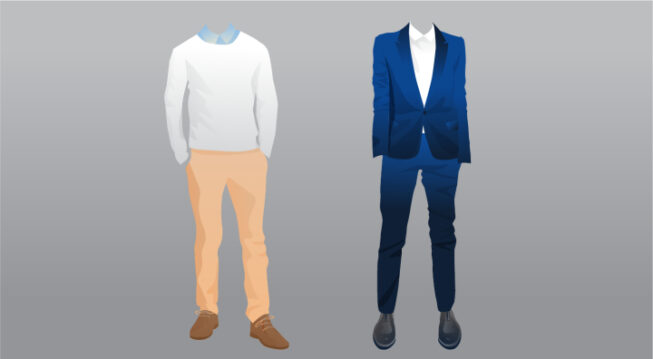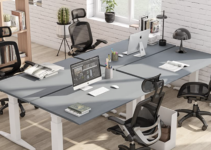Businesses and brands today use various tactics to outshine their rivals. These tricks could come from something as casual as eye-catching corporate apparel. While designing a formal outfit for your brand seems simple, making it count as a tool to scale your business in the right direction takes a lot of work.
Keep reading to learn specific tips and tricks for creating a robust corporate apparel program to propel your brand to a desirable level.
Table of Contents
Importance and Impacts of Corporate Outfits

Source: mrporter.com
Having a well-designed corporate apparel program can influence your employee brand and your clients’ brands in several ways.
Clients
Studies have shown that brands that provide corporate outfits for their employees gain more trust from their clients. This enhances how clients perceive your workers and further deepens their bond. It also portrays your workers as professionals, no matter their role in the organization.
Employee
Having matching outfits for your workers goes a long way in improving their teamwork, spirit, and confidence. They feel more involved in the business’s growth and development. A corporate outfit also makes them look good, which increases their work morale and interest. Besides, when appropriately designed, these outfits can protect your workers from various occupational hazards.
Brand
Solidifying and improving business visibility is one of the most important reasons you should consider creating a corporate apparel program. Official outfits help you advertise your business and showcase your logo and activities. In the long run, this enables you to achieve rapid growth and sustainable development.
Tips for Creating a Corporate Outfit

Source: indeed.com
Below are some tips for creating the right corporate outfits.
Practicality
Choose practical clothing for your organization. Practicality in this regard means you must consider the kind of clothing that won’t hinder your employees’ convenience while working. The apparel must also include safety equipment, where applicable. For instance, corporate apparel should contain personal protective equipment like masks, head covers, and gloves if your company is in the health niche.
Employees working in the food industry should have customized aprons to protect them from spillage. On the other hand, if your employees work in a closed office space, something formal and comfortable that will make them more approachable should be considered.
Color
Your business should have a distinctive brand color that says something about your actions. Colors can make bold statements and determine how clients will perceive your workforce. For instance, black and white uniforms usually portray professionalism, while brighter colors portray friendliness and enthusiasm.
In your corporate apparel program, you should use your brand color as the base for your uniforms. Then, every other detail, like the logo and inscriptions, can go over the base color. When deciding, ensure that your logo and inscriptions contrast nicely with the uniform’s color.
Fabric
Your fabric choice will determine your uniforms’ durability and overall expenses. Hence, invest in durable materials instead of low-quality fabrics needing a replacement quickly. The location and prevailing weather conditions that your employees work in also matter. For instance, employees working outdoors in a cold region should have uniforms that consider these extreme conditions.
Another factor to consider under “fabric choice” is the ease of cleaning. If your company is in the engineering and construction niche, your corporate apparel should be tough with stains and easy to clean.
Style

Source: foundersguide.com
Carefully considering the design and style of your corporate apparel goes a long way in fulfilling the program’s objective. If you have a logo, place it strategically on the uniform. If your clients frequently come into close contact with your employee, you should invest in a design with a small logo. If it’s the other way around, your logo should be large enough for everyone to see.
Your choice of inscription type is also pertinent. Embroidery makes your logo look sleek and stylish but more technical. Digital printing, on the other hand, is faster and has a quicker turnaround in placing orders.
Managing Your Apparel Program Using an Inventory
Having an inventory can help you manage your corporate apparel program effectively. This inventory should contain a list of corporate uniforms for your employees, their staff numbers, and the frequency of their replacements. It should also have your budget for a specified period. Some management systems and software can help you keep this information in an organized and safe location. Doing this will help you keep track of the program and make it easy for you to transfer recurring orders to your outfit vendor.
How to Find a Supplier
After carefully considering the fabric, style, and design, the subsequent deliberation is finding a supplier for your corporate apparel program. Usually, there are two major ways of going about this: patronizing physical textile companies or using online-based stores. There are also textile shops that operate both online and physical stores. It would help if you considered a store that offers a wide variety of cloth types and sells in bulk. This will save you a lot of money and make it easy to replace worn-out apparel.

Source: algopix.com
Wordans is an example of a textile wholesaler that offers t-shirts, sweatshirts, and other clothing from many brands with or without customization. They provide an easy way of actualizing your corporate apparel program through the wholesale and retail sale of men’s and women’s clothing. You can easily choose and design the clothing you wish and type in the quantity you need on the platform. Besides, the platform has a feature that enables you to ship your orders to a preferred location. You can visit the official website for more information.
Conclusion
A well-designed corporate apparel program can be the game changer in creating a sustainable advantage over competitors. It helps you improve brand visibility, employee morale, and customer satisfaction. However, the various tips and tricks enumerated above should be customized according to your company’s needs.
Study your employees and your company’s peculiarities before you roll out any official apparel. Consider a computerized inventory that’ll help you automate the whole process and minimize human error. Lastly, you can consult legal and industry professionals to guide you on best practices for your company’s corporate attire.






